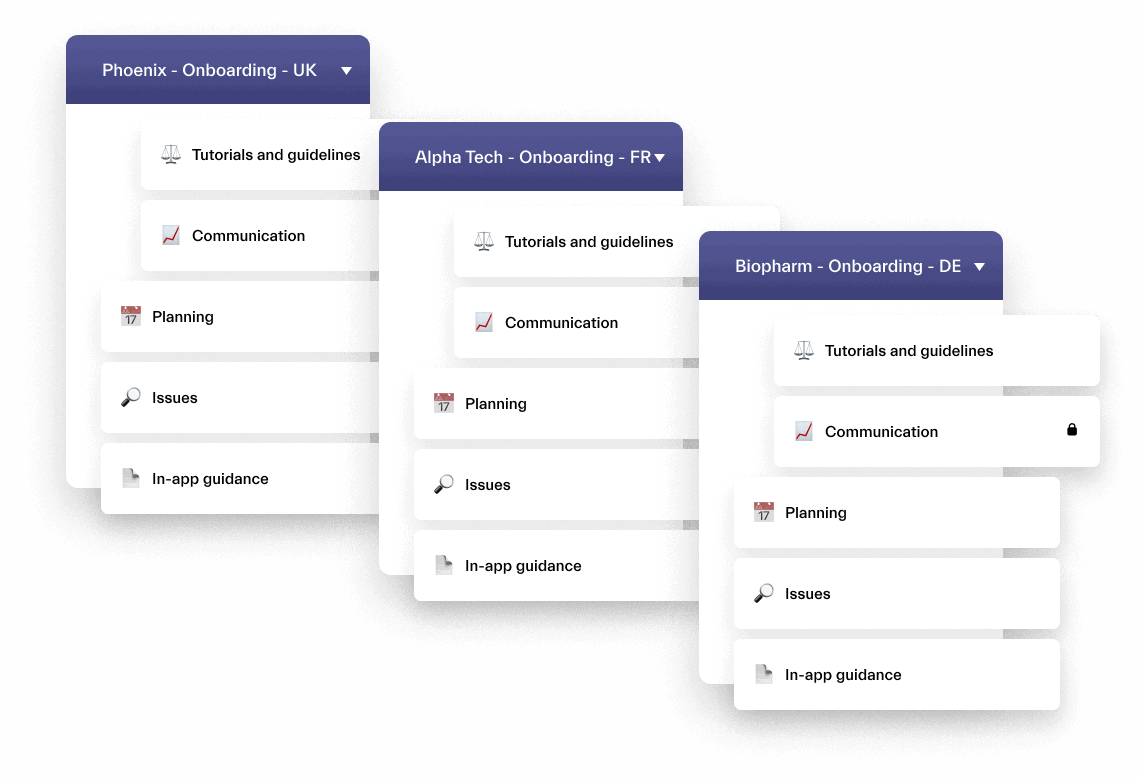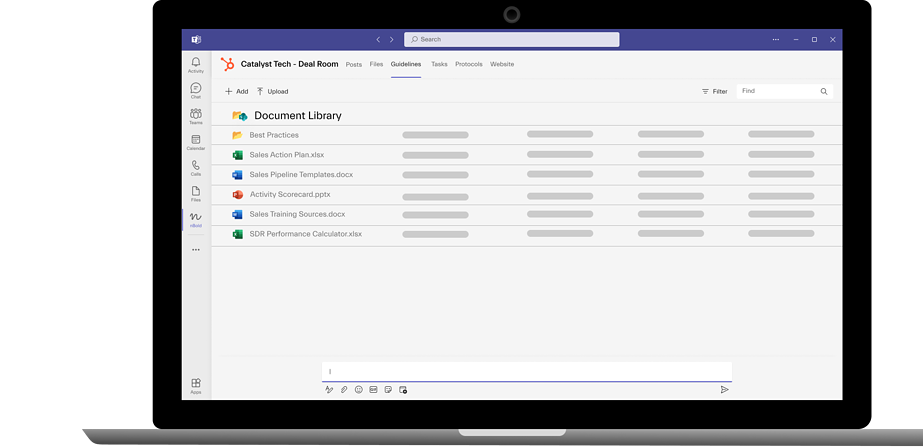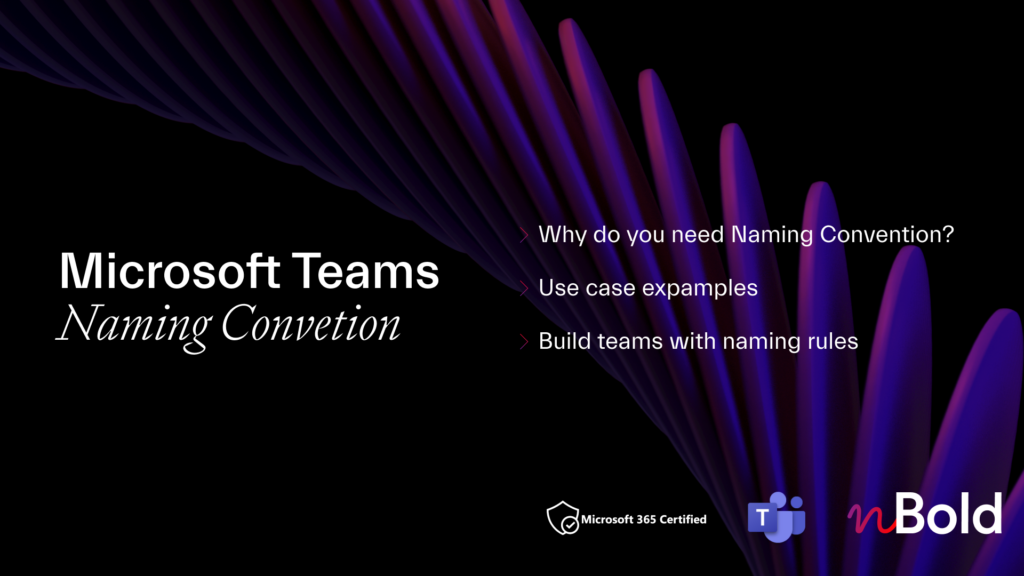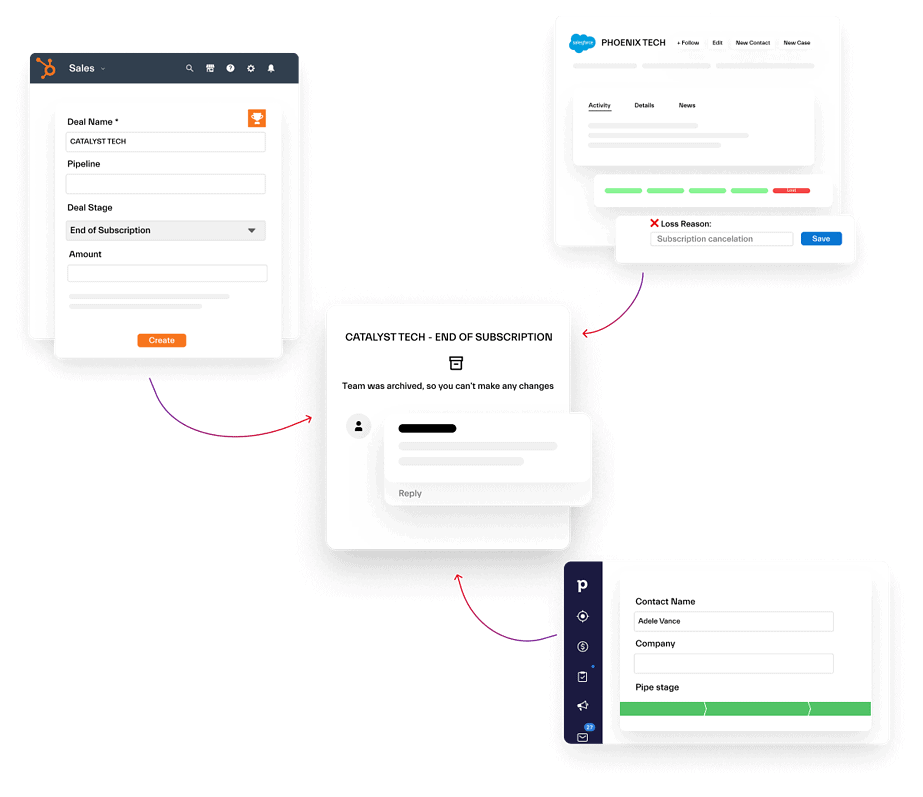One of the best features of Microsoft Teams is the ability to create templates – pre-built framework for new teams. They allow you to save lots of time, structure the way your teams work and streamline workflows. In this article, we’ll share ten tips for creating effective Microsoft Teams templates, so you can get the most out of this tool. We’ll cover everything you need to know to create effective Teams templates that your team will love.
1. Choose the right solution for Microsoft Teams templates
Before you start creating Teams templates, it’s important to choose the right solution for your needs. There are several options available, including built-in templates from Microsoft and third-party solutions.
The main benefit of using native templates is that they are easy to use and require no additional setup or configuration. They offer a good starting point for many teams and can help you create standardized channel structure and a naming convention.
However, native templates do have some limitations. For example, they may not be customizable enough to meet your team’s specific needs. They may also lack features or functionality that your team requires, such as customized tabs or automated workflows.
In terms of governance, you may also need some additional capabilities.
You can learn more about Microsoft Teams templates’ capabilities here.
That’s where third-party solutions like nBold come in. nBold offers a technology for creating custom Teams templates that can be tailored to your team’s unique workflows and processes. With nBold, you can create templates with customized cloned tabs and channels, pre-built files and folders and other content, making it easy to create new Teams that meet your team’s specific needs.

No matter which solution you choose, make sure it offers the customization and flexibility you need to create effective Teams templates that will work for your team.
2. Identify team’s goals and needs
Before starting creating the templates, it’s important to identify your team’s needs and goals. This will help you create a template that is tailored to your team’s unique workflows and processes, and will ensure that it is effective and useful for your team.
Some questions to consider when defining your team’s needs and goals include:
- What is the purpose of the team?
- Who will be using it?
- What types of content will the Team need to create and share?
- What features and functionality will the Team require?
For example, if you are creating a template for a sales team to work on deals, your needs and goals might include:
- Creating a space for sales reps to collaborate and share deal information
- Including channels for specific sales regions or products
- Providing pre-built content like sales scripts or customer contact information
- Including tabs for tracking sales
3. Define use cases for Microsoft Teams templates
Creating a Teams template that is tailored to your team’s specific needs requires an understanding of your team’s workflows and processes. Identifying common use cases is an effective way to gain this understanding.
Here are some tips to help you identify common use cases for your Microsoft Teams templates:
- Identify the pain points and areas where a Teams template could provide value for your team. Consider areas such as project management, crisis resolution, marketing campaigns, onboarding, sales, collaboration, etc.
- Review the workflows and processes used by your team to identify common patterns. Look for areas where a Teams template could streamline these workflows or make them more efficient.
- Ask team members about their daily tasks and responsibilities, and the tools and processes they use to complete them. This can help you identify common use cases and areas where a Teams template could provide value.
- Check if there are any existing templates available for your industry or department. This can provide inspiration for common use cases and help you avoid reinventing the wheel.
→Download: Catalog of Microsoft Teams Use Cases
4. Define team roles and permissions
Defining team roles and permissions will allow you to have a better control of how your teams are created and managed. Here are some best practices that you can follow:
- Determine who in your organization should be responsible for creating and managing templates. This may be restricted to a small group of template managers such as IT administrators, department heads, or project managers or extended to a larger group of team members.
- Define who will be the permanent owners and members of teams created from the template. This may include project leads, team managers, or department heads. While you cannot do that with the native templates, you can set up this policy with nBold.
- Decide who should have permission to create new teams from the template. You may consider setting up Audience Targeting to make sure only specific groups of users can see and access particular templates.
- Consider implementing a team approval workflow to ensure that teams are created in accordance with established policies and procedures. This can help prevent unauthorized teams from being created and ensure that teams are set up correctly.
- Determine the level of access and permissions that team members should have. This may include setting up different levels of permissions for different roles, such as team owners, members, and guests.

5. Customize channels and tabs within Microsoft Teams templates
Customizing the channels and tabs in your Teams template can help you create a more organized and streamlined experience for your team members. Here is how you can do it:
- Consider the different functions or projects that your team works on and create channels that reflect them. For example, if you have a marketing team, you could create channels for social media, content creation, and analytics.
- Consider the apps and tools that your team uses on a regular basis and add tabs for them in relevant channels. For example, if your team uses Planner for task management, you could add a Trello tab in your tasks channel.
- Set up default settings for channels and tabs to ensure consistency across the template. This could include settings such as notifications, permissions, and app integration.
- Use nBold to clone all the content you add to channels, including pre-configured tabs.

6. Add standardized content
Adding standardized content to your Teams template can help ensure that all team members have access to the same information and resources. Here are some best practices that you can follow:
- Create a welcome message that provides an overview of the template and its purpose. This can help new team members understand the template’s structure and how to use it.
- Create a library of resources that team members can access in relevant channels. This could include links to training materials, company policies, and FAQs. You can do that through a SharePoint site or use a tool like OneNote. Then, just add them as tabs for more visibility and easier access.
- Standardize naming conventions for channels and tabs to make them easy to find and identify. This could include using consistent capitalization and avoiding abbreviations.
- Include templates and forms that team members can use to complete tasks or projects. For example, you could include a project proposal template or a feedback form.
By adding standardized content to your Teams template, you can ensure that all team members have access to the same information and resources, making it easier to collaborate and work efficiently.

7. Create a naming convention for Microsoft Teams templates
Creating a naming convention for your Teams template can help you structure your digital workspaces and make it easier for team members to find what they need. Here are some tips for creating a naming convention for Microsoft Teams templates:
- Use consistent naming conventions across teams and channels. This can help team members quickly identify where they’re supposed to look for the right information and share updates, as well as minimize confusion.
- Use clear and concise names that accurately describe the content. Avoid using jargon or abbreviations that team members may not understand.
- Use descriptive words: Use descriptive words that accurately reflect the content of the team or channel. For example, use “Project Planning” instead of “Project 1”.
- Use dynamic naming convention when configuring the template. For example, you may choose to include the location, department or job role of the user creating the team to the team’s name.
For instance:
Project – Project name – City
This way, whenever a new team is created from the template, it’s easy to identify who it’s created for, which branch will use it, etc. In the end, the team name can look like this:
Project – Coca-Cola – LA
While Dynamic naming convention is not available natively, you can get this capability with nBold.


White Paper with free Teams Naming Convention examples
- Use Case Examples
- Microsoft Teams naming convention solutions
- Naming Convention at Teams Template Level
- Fixed and Dynamic Naming Convention
8. Set up automation
Setting up automation for your Teams templates can help save time and reduce errors. Here are some of the automation options that you may want to consider:
- Define the workflows that you want to automate. This could include creation of teams or channels, adding tabs, members, or updating files.
- Use Power Automate. Power Automate is a tool that allows you to automate practically anything in Teams. You can use it to automate processes that you defined in the previous step.
- Consider exploring automation solutions like nBold, which offers a range of integrations that allow you to trigger the creation of teams in Microsoft Teams based on events happening in other tools. For example, you can create a new team in Microsoft Teams whenever a new project is created in Asana, or when a new client is added to Salesforce. nBold also has APIs that allow you to connect to Power Automate and trigger team creation of new teams from Collaboration Templates.
- Set up team’s lifecycle policies. You can automate team archiving and/or deleting after a certain amount of time and inactivity. Natively, you can do that at the tenant level, meaning all the teams will have to follow the same lifecycle policy rules.
- Test your automated workflows to ensure that they are working as expected. Refine them as needed to improve their efficiency and accuracy.
If you need more customization, you can leverage nBold. With nBold you can set up lifecycle policies for specific templates, meaning you can have different lifecycle rules for different team, allowing for more flexibility.

By setting up automation for your Teams template, you can save time and reduce errors, freeing up your team members to focus on more important tasks.
9. Revise and iterate
Creating effective Microsoft Teams templates is an ongoing process that requires continuous revision and iteration, so here are some tips that may be helpful:
- Keep track of how your templates are being used and which teams are being created from them. This can help you identify areas for improvement and determine whether your templates are meeting your organization’s needs.
- Ask team members for feedback on the templates and teams created from them. This can help you identify areas for improvement and make changes that better meet the needs of your organization.
- Stay up to date on best practices for Microsoft Teams templates and incorporate them into your templates. This can help ensure that your templates are effective and efficient.
- Based on feedback and usage data, make changes to your templates as needed. This may include updating team roles and permissions, adding or removing channels and tabs, or revising standardized content.
- Before making changes to your templates, test them in a test environment to ensure that they work as expected. This can help prevent issues from arising when the changes are implemented in production.
By revising and iterating on your templates, you can ensure that they remain effective and meet the changing needs of your organization.
By following these tips, you can create Microsoft Teams templates that enable your teams to collaborate effectively, achieve their goals, and drive success for your organization.
If you need help creating and setting up Microsoft Teams templates, our team is there to help you and find the best solution for your specific needs.
